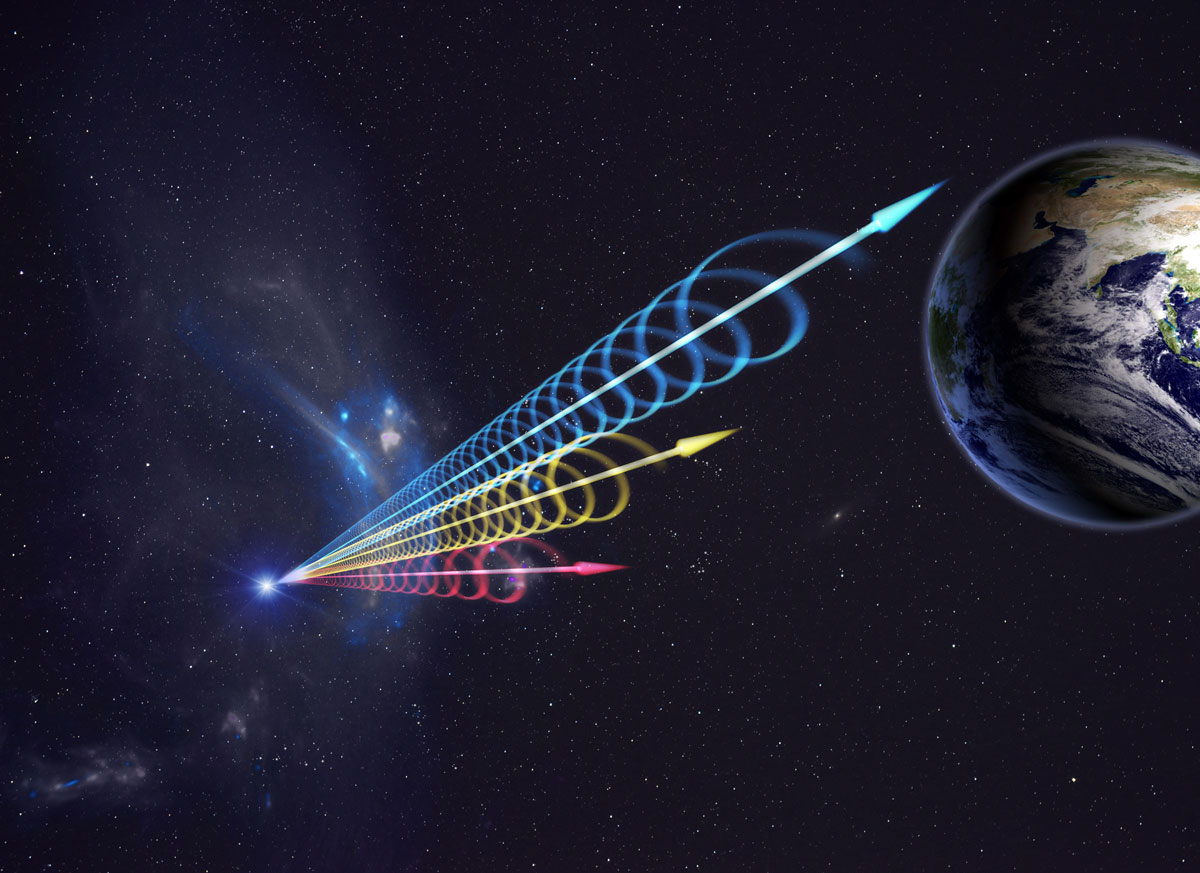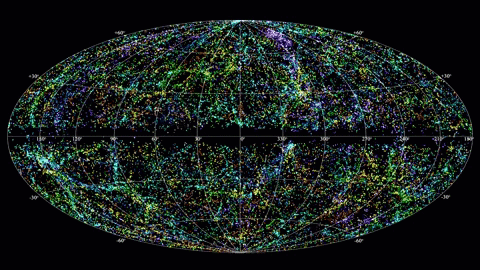Hints of intriguing diversity seen in super-energetic 'fast radio bursts'
Astronomers are learning more and more about these mysterious cosmic outbursts.

The story of sneaky fast radio bursts (FRBs) may be more complicated than we imagined.
It's tough to figure out the origin stories of FRBs because they're so brief, so bright and appear to come from numerous regions in the sky. Most of these powerful cosmic blasts seem to occur in young galaxies, although that's not always the case.
A new study examined a small population of repeating FRBs, looking at the properties of their light — specifically, its polarization. Polarized light oscillates in the same direction, rather than the relatively random wiggling seen in "normal" light.
Investigating such polarization can reveal key details about FRBs, study team members said.
Video: Fast radio bursts traced to spiral arms of several galaxies by Hubble
Related: Mysterious 'fast radio bursts' fire rhythmically through the cosmos
"The emission from a FRB traverses an enormous distance before hitting Earth, passing through regions that can put their own particular twist on the radio polarization," officials with the Green Bank Observatory in West Virginia, the home institution of one of the new study's co-authors, said in a statement.
"For this reason, the study of the polarization of FRBs, and the changes it undergoes until it is detected by our telescopes on Earth, tells us about the environments where they are born and all the space in between," they added.
Breaking space news, the latest updates on rocket launches, skywatching events and more!
Study team members found that, in the five repeating FRBs they looked at, key details of polarization depend upon the radio frequency in which it is observed. These properties can also change very quickly in a short time.

The rapid changes may happen "if repeating FRB emission passes through a complex environment around the bursting sources," the statement added. For example, the FRB light could be moving through the remnants of a supernova (exploded star), the gas surrounding a rapidly rotating, dense stellar corpse called a pulsar, or superheated gas near huge black holes.
"With these measurements, we start to see the evolutionary trend in FRBs, with more active sources in more complex environments and larger polarization changes being younger explosions," study lead author Yi Feng, a scientist at Zhejiang National Lab in Hangzhou, China, said in the statement.
"These extremely active FRBs could be a distinct population," Feng added.
The new study was published online Thursday (March 17) in the journal Science.
Follow Elizabeth Howell on Twitter @howellspace. Follow us on Twitter @Spacedotcom and on Facebook.

Elizabeth Howell (she/her), Ph.D., was a staff writer in the spaceflight channel between 2022 and 2024 specializing in Canadian space news. She was contributing writer for Space.com for 10 years from 2012 to 2024. Elizabeth's reporting includes multiple exclusives with the White House, leading world coverage about a lost-and-found space tomato on the International Space Station, witnessing five human spaceflight launches on two continents, flying parabolic, working inside a spacesuit, and participating in a simulated Mars mission. Her latest book, "Why Am I Taller?" (ECW Press, 2022) is co-written with astronaut Dave Williams.
